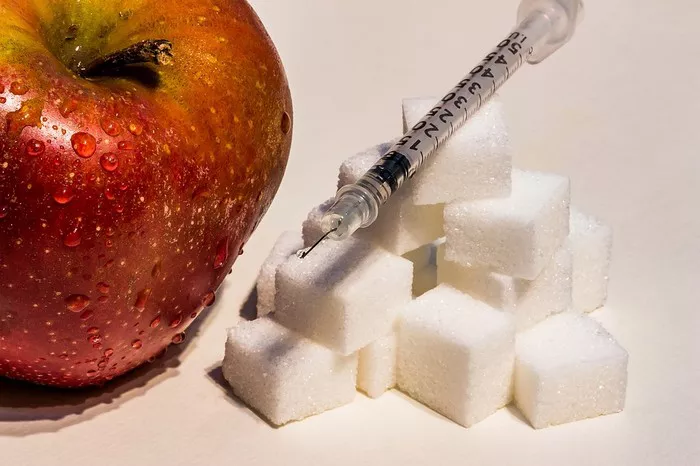Random Blood Sugar (RBS)
Random blood sugar, also known as casual blood sugar, is a test that measures glucose levels at any given time, regardless of when the person last ate. This test provides a snapshot of the blood sugar level at a random time of day, making it a useful tool for immediate assessment.
How RBS is Measured
The RBS test is straightforward. A small blood sample is taken from a fingertip using a lancet and analyzed using a glucose meter. The process is quick and can be done in a doctor’s office, at home, or anywhere else convenient.
Significance of RBS
RBS levels can fluctuate significantly throughout the day due to factors such as diet, physical activity, stress, and illness. Therefore, while RBS is not as controlled as fasting blood sugar, it provides valuable information about how blood sugar levels change in real-time and how the body responds to various stimuli.
Normal RBS Levels
For non-diabetic individuals, normal RBS levels typically range between 70 mg/dL and 140 mg/dL. However, these values can vary slightly depending on individual health, the time of the test, and other factors.
RBS in Diabetes Management
For people with diabetes, especially Type 1 diabetes, RBS is a critical tool for daily management. It helps to:
- Monitor daily blood sugar fluctuations: Understanding how different foods, activities, and stressors impact blood sugar levels.
- Adjust insulin doses: Immediate feedback on whether current insulin therapy is adequate.
- Prevent hypoglycemia or hyperglycemia: Early detection of dangerously low or high blood sugar levels allows for timely intervention.
Limitations of RBS
While RBS is useful, it has limitations:
- Variability: Because it is taken at random times, it can be influenced by recent meals, exercise, or stress, making it less reliable for diagnosing diabetes.
- Lack of Standardization: Since it does not follow a specific protocol (like fasting or post-meal testing), interpreting RBS results can be more complex.
Fasting Blood Sugar (FBS)
Fasting blood sugar is a test that measures blood glucose levels after an individual has not eaten for at least eight hours. This test is typically performed in the morning before breakfast.
How FBS is Measured
Similar to the RBS test, a blood sample is collected, usually through a finger prick, and analyzed using a glucose meter. Since the test requires fasting, it is usually conducted in a clinical setting, although some individuals may also perform it at home under specific guidance.
Significance of FBS
FBS provides a more controlled and stable measurement of blood glucose levels, reflecting the body’s baseline blood sugar level without the immediate influence of food intake.
Normal FBS Levels
For non-diabetic individuals, normal fasting blood sugar levels typically range between 70 mg/dL and 99 mg/dL. Levels between 100 mg/dL and 125 mg/dL indicate prediabetes, while levels of 126 mg/dL or higher suggest diabetes.
FBS in Diabetes Diagnosis and Management
FBS is a crucial tool for diagnosing diabetes and monitoring long-term glucose control:
- Diagnosis: A key component in diagnosing diabetes or prediabetes.
- Monitoring: Helps evaluate the effectiveness of diabetes management strategies, such as medication, diet, and exercise.
- Predicting Complications: Consistently high fasting blood sugar levels can indicate a higher risk of diabetes-related complications.
Limitations of FBS
While FBS is highly valuable, it has its limitations:
- Fasting Requirement: The need to fast can be inconvenient and uncomfortable for some individuals.
- Single Point in Time: Like RBS, it provides a snapshot rather than a comprehensive picture of blood sugar patterns over time.
Comparative Analysis of RBS and FBS
Understanding the differences between RBS and FBS tests is vital for effective diabetes management. Both tests have unique strengths and limitations, and their roles often complement each other.
Timing and Context
- RBS: Taken at any time, provides real-time information, useful for daily monitoring and adjusting insulin doses.
- FBS: Taken after at least eight hours of fasting, offers a stable baseline measurement, essential for diagnosis and long-term monitoring.
Usage in Diagnosis
- RBS: Less reliable for diagnosis due to variability and lack of standardization.
- FBS: More reliable and standardized, commonly used for diagnosing diabetes and prediabetes.
Impact of External Factors
- RBS: Influenced by recent meals, physical activity, stress, and illness, leading to more variability.
- FBS: Less influenced by immediate external factors due to the fasting requirement, providing a more consistent measurement.
Practicality and Convenience
- RBS: Can be done anytime, anywhere, without preparation, making it convenient for immediate assessments.
- FBS: Requires fasting, which can be inconvenient and requires planning, typically done in the morning before breakfast.
Integrating RBS and FBS in Diabetes Management
For individuals with diabetes, both RBS and FBS tests play crucial roles. Effective diabetes management often involves a combination of these tests to gain a comprehensive understanding of blood sugar patterns and trends.
Daily Monitoring with RBS
Random blood sugar tests are indispensable for day-to-day diabetes management:
- Immediate Feedback: Helps adjust insulin doses based on real-time blood sugar levels.
- Managing Fluctuations: Monitors the impact of meals, exercise, and other daily activities.
- Preventing Emergencies: Detects hypoglycemia or hyperglycemia early, allowing for prompt intervention.
Long-term Monitoring with FBS
Fasting blood sugar tests are essential for long-term diabetes control:
- Evaluating Treatment Efficacy: Assesses how well current treatment plans are working over time.
- Tracking Baseline Levels: Monitors stable blood sugar levels without the immediate influence of food.
- Predicting Risks: Identifies trends that could indicate an increased risk of complications.
Combined Approach
A combined approach using both RBS and FBS provides a more holistic view of blood sugar control:
- Comprehensive Monitoring: Combines immediate feedback with stable baseline measurements.
- Personalized Treatment: Tailors treatment plans based on a fuller understanding of blood sugar patterns.
- Informed Decision-Making: Empowers patients and healthcare providers to make better-informed decisions about diabetes management.
See also: What’s Diabetic Neuropathy
Conclusion
Random and fasting blood sugar tests are both essential tools in the management of diabetes, each serving unique and complementary roles. RBS offers real-time insights into how daily activities impact blood sugar levels, while FBS provides a stable baseline measurement crucial for diagnosis and long-term monitoring. By understanding the differences and integrating both tests into a comprehensive diabetes management plan, individuals with diabetes can achieve better control over their condition and reduce the risk of complications.
Effective diabetes management requires regular monitoring, informed decision-making, and collaboration between patients and healthcare providers. Both random and fasting blood sugar tests are indispensable components of this process, helping to ensure optimal blood sugar control and overall health.
Related topics:
What are Types of Insulin Used for Insulin Pump Therapy
Diabetic Neuropathy VS Peripheral Neuropathy What’s the Difference

























